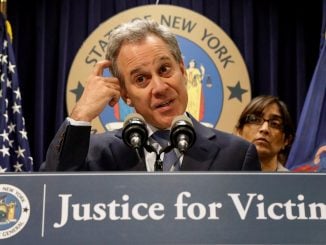BOSTON — Before the pandemic, Boston commuters bonded over a slew of ills that plagued the nation’s oldest subway system, from delays and breakdowns to the occasional derailment.
Now public transit systems nationwide are grappling with a new reality — drastically plummeting ridership and revenue caused by a stealthy virus that’s also sickening and killing transit workers.
With no clear predictions about when most riders will feel safe enough to return, public transportation networks from Washington to New York to Chicago are doing their best to hold on.
The future feels especially shaky in Boston, the poster child for unreliable public transit.
A few years ago, the city abruptly withdrew what was seen as a strong bid for the 2024 Olympics after incredulous commuters asked how it could even think about hosting the Games with a system that often can’t get them to work on time.
The Massachusetts Bay Transportation Authority, the nation’s fourth-busiest public transit system, is now running a modified Saturday schedule and has about 20% of its typical ridership on buses. On subways, ridership is just 8% of a typical pre-pandemic day.
Despite the skeletal ridership and declining revenue from advertising on buses, subways and trams, there’s been no talk of shuttering the system, even as the virus has sickened dozens of employees — mostly bus drivers — and killed one.
“We certainly have seen a durable level of ridership,” MBTA General Manager Steve Poftak said. “We get every indication from the timing of the trips that many of these folks are health care workers and health care personnel.”
The coronavirus aid bill approved by Congress and signed by President Donald Trump included $25 billion in public transit grants to help agencies contend with the coronavirus. MBTA chief financial officer Mary Ann O’Hara has said the system should be eligible for about $840 million of those funds. The beleaguered transit system — which was already struggling to replace 30-year-old subway and trolley cars — is projecting a $231 million budget deficit for the fiscal year that ends June 30.
Weekday subway ridership typically tops 5 million in New York, the nation’s busiest public transit system. But overall mass transit use has plummeted more than 90% in recent weeks. The Metropolitan Transportation Authority also operates several bridges and tunnels, where it’s now losing revenue.
The MTA has upwards of 70,000 employees, about two-thirds of whom work for the subway. At least 95 employees have died from confirmed or suspected COVID-19 cases.
While it’s already received about $3.8 billion from the relief bill, the MTA asked for roughly the same amount to help cover an operating loss it estimates could reach $8.5 billion. Without additional federal funding, MTA head Patrick Foye said, “the present and future of the MTA are in serious jeopardy.”
An MTA-commissioned study estimated 60% of riders could return to the transit system by fall. But Foye acknowledged “no one really knows” if that will happen.
The pandemic arrived at a time when the proliferation of bike-sharing and ride-sharing services was already chipping away at subway ridership.
“A change that was going to take five to 10 years has basically taken place overnight,” said Tom Wright, president of urban planning think tank Regional Plan Association.
Against that backdrop, New York’s legislature approved a first-in-the-nation “congestion pricing” plan last year to fund desperately needed improvements to the 116-year-old subway system. The scheduled early 2021 rollout to charge motorists entering Manhattan’s central business district is now unlikely, Foye said.
In Washington, officials with the nation’s second-busiest public transit system are using plummeting ridership to shut down stations and accelerate construction plans.
The Washington Metropolitan Area Transit Authority announced last month it will suspend Silver Line service and close nine stations in Northern Virginia from Memorial Day through fall to rebuild platforms and connect the Silver Line to the Metro’s existing network.
Ridership at some stations currently totals just 1,200 people per weekday, less than 5% of normal traffic, Metro general manager Paul Wiedefeld said in a statement.
Even with the economic hit, few urban transit systems are trying to boost ridership now.
Some transportation systems, like the Chicago Transit Authority, are actively trying to discourage riders who aren’t on a critical mission. Others, requiring riders to enter and exit buses from the rear door to protect drivers, have abandoned some fare collection efforts altogether.
Even in the midst of the public health crisis, transit officials are beginning to think about the future — including how to ensure riders feel safe when maintaining a distance from others at rush hour is hard to imagine.
The MBTA is already providing bus drivers with a button to push if their bus becomes too crowded, allowing managers to transfer other buses to the area, transit officials said.



